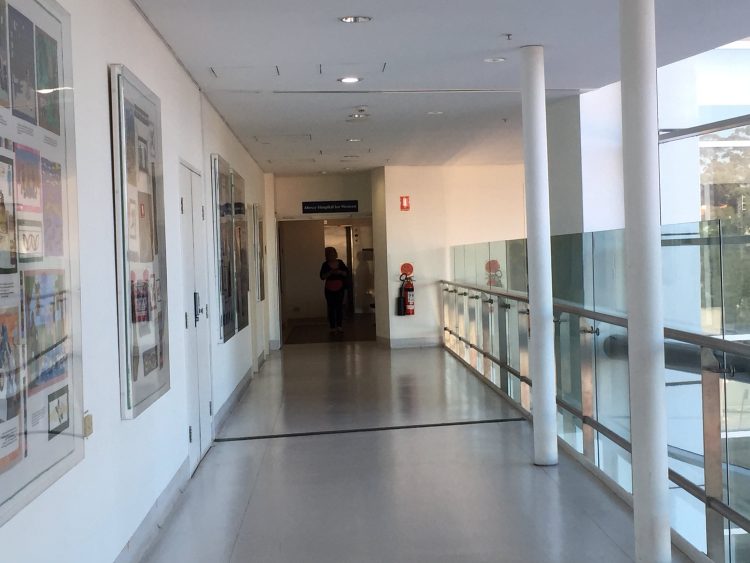Melissa Sweet writes:
Health services across Australia will be required to implement wide-ranging measures aimed at improving the safety and quality of care provided to Aboriginal and Torres Strait Islander people.
The reforms, which aim to tackle problems such as institutional racism and culturally unsafe services and workplaces, are part of the second edition of the National Safety and Quality Health Service Standards, due for release later this month by the Australian Commission on Safety and Quality in Health Care.
For the first time, these standards – which will be assessed in public and private hospitals and many other forms of health services from 1 January 2019 – will specifically address the needs of Aboriginal and Torres Strait Islander people.
They require services to implement six actions (see graphic below) related to working in partnerships with local Aboriginal and Torres Strait Islander communities, reforming governance processes, and ensuring patients are routinely asked if they identify as Aboriginal and Torres Strait Islander and their responses documented in their clinical notes.
According to a near-final draft of a user guide supporting the new standards, health service organisations will be encouraged to develop an Aboriginal and Torres Strait Islander Health Action Plan and use Aboriginal and Torres Strait Islander health impact statements widely across their work.
Recognising health impacts of racism
The guide says health services need to “recognise that racist attitudes have had a marked impact on the health outcomes of Aboriginal and Torres Strait Islander people, and that racism in all its forms (personal, casual and institutionalised) must be identified and actions must be taken to eliminate it”.
Other aims include a focus on trauma-informed care, increasing the cultural safety of services for Aboriginal and Torres Strait Islander patients and staff, and increasing Indigenous employment at all levels of health organisations, including through the use of employment strategies and targets.
The guide was developed in consultation with the Wardliparingga Aboriginal Research Unit of the South Australian Health and Medical Research Institute and an Aboriginal and Torres Strait Islander Health Project Working Group. A group of senior Aboriginal and Torres Strait Islander officers from state and territory health departments also played a significant role in shaping the guide.
It notes that many Aboriginal and Torres Strait Islander people find health services unwelcoming, and says an intended outcome of the new standards is “a reduction in the number of Aboriginal and Torres Strait Islander people experiencing hospitals as sites of trauma”.
Margaret Banks, a Program Director at the Commission who has led the project, told Croakey that the new standards would “absolutely” require services to have a fundamental rethink about how they provide care to and employ Aboriginal and Torres Strait Islander people.
“For the very first time what we have is a systemic national approach,” she said.
“This is a whole game changer… and builds in the capacity for Aboriginal people to influence how care is delivered… at the individual level and how care is delivered to their community.”
Mike Wallace, chief operating officer at the Commission, said the really important aspect was that the new standards would require health services to communicate with their local Aboriginal population and to develop health service plans around their needs, and to report back through their board on these actions and outcomes.
The Congress of Aboriginal and Torres Strait Islander Nurses and Midwives (CATSINaM) and other experts in the field of cultural safety have welcomed the new standards as long overdue, but there are concerns about a lack of clarity in the terminology used, as they use the language of “cultural awareness” and “cultural competence” rather than “cultural safety”, although this latter concept is the focus of supporting documents.
Power relations, holistic health & traditional healing
The new standards mandate efforts to improve the cultural awareness and competency of the clinical and non-clinical workforce, and the guide suggests that health services could include process and outcome indicators of cultural competency on their organisation’s dashboards, alongside other safety and quality indicators.
The guide notes that “a culturally safe workforce considers power relations, cultural differences and the rights of the patient, and encourages workers to reflect on their own attitudes and beliefs”.
It suggests health services establish a mentoring program for the Aboriginal and Torres Strait Islander workforce and that, in some places, it may be appropriate to employ community members to act as health ambassadors for Aboriginal and Torres Strait Islander patients.
It also suggests providing access to cultural coaching and mentoring for the non-Indigenous workforce to promote continued self-reflection on mainstream culture, and support their learning and understanding of Aboriginal and Torres Strait Islander cultures.
The guide urges health services to incorporate holistic Aboriginal and Torres Strait Islander understandings of health, and to improve care coordination to recognise the complex health needs of Aboriginal and Torres Strait Islander patients, including their spiritual and cultural needs. Access to interpreters should be provided.
It also encourages services to consider changes that may improve access to care and the environment in which care is provided, such as outreach or hospital-in-the-home services and open appointment clinics.
It encourages health services to develop policies and protocols on the use of traditional healers such as cleansing ceremonies and the use of traditional bush medicine, guided by locally acceptable practices, and also suggests the use of Aboriginal and Torres Strait Islander names for wards and meeting rooms.
It says health services should engage with Aboriginal and Torres Strait Islander community organisations, services and individuals in ways that are relevant to their circumstances, concerns and priorities, and that minimise the risk of overburden. It suggests providing adequate financial remuneration for community spokespeople or Elders who regularly participate in partnership roles.
The standard also requires that there be policies, procedures and protocols to ensure appropriate identification of Aboriginal and/or Torres Strait Islander patients, to ensure there is accurate data to inform policy, and service planning and development.
It suggests that training and support be provided to frontline, administrative and clinical workforce on the importance of identification at an individual and systems level.
Need for clarity of language, focus
The release of the standards is timely with the launch of a new Leaders in Indigenous Nursing and Midwifery Network (LINMEN) at a recent Congress of Aboriginal and Torres Strait Islander Nurses and Midwives (CATSINaM) conference that aims to embed cultural safety more widely.
The conference also heard concerns about a lack of clarity around concepts such as cultural awareness and cultural safety, which are often used interchangeably despite being quite different.
As previously reported at Croakey, the concept of cultural safety reverses the gaze so that health professionals examine their own beliefs, behaviours and practices as well as issues such as institutional racism, whereas transcultural concepts like cultural awareness can promote the “other-ing” of patients and “cultural voyeurism”.

Janine Mohamed, CEO of CATSINaM, welcomed the new standards as a long overdue move towards improving the care and outcomes for Aboriginal and Torres Strait Islander people, as well as workplace safety for Indigenous employees, and to ensuring more representative governance of organisations.
She raised concerns about the use of “cultural awareness” terminology in the standard, rather than “cultural safety”, and said CATSINaM would be offering cultural safety training as well as planning and implementation workshops to assist health services to comply with the new requirements. She said:
“We’re happy about the plans to measure the impact of the new standards but it needs to be remembered that a foundation of cultural safety is that it is up to the recipient of care – not the institution or the service providers – to decide if care and services are culturally safe.”
“We are excited by the potential for the new standards to dovetail with our efforts in other areas to embed cultural safety, for example in healthcare practitioner and accreditation legislation, and through enactment of the National Aboriginal and Torres Strait Islander health plan.”

Dr Leonie Cox, a senior lecturer at QUT in Brisbane who presented on cultural safety at the CATSINaM conference, raised the same concerns as Mohamed, saying: “I’d much rather see the Commission grasp the nettle, and use the term ‘cultural safety’ in the standards”. However, Cox said that the user guide was promoting cultural safety and was a useful document.
Margaret Banks said the standards used the terminology of cultural awareness and cultural competence, as this was the language used by Aboriginal and Torres Strait Islander leaders consulted by the Commission.
She said it would be important to evaluate the impact of cultural training, and also to develop an Indigenous workforce to assess the implementation of the standards as part of accreditation.
“We have started a conversation with the Commonwealth about the need to do build an Indigenous accrediting workforce, she said.
Responding to concerns that services without an identified Indigenous patient population would not have to implement the Indigenous-specific actions, Banks said all health services covered by the standards would have to comply with at least two of the Indigenous-specific actions.
The new edition of the standards and the supporting documents are due to be available from the Commission’s website on 28 November.
Declaration: Melissa Sweet has undertaken occasional writing consultancies for the Australian Commission on Safety and Quality in Health Care
Coming up next as part of the CATSINaM conference coverage – a call for cultural safety training for politicians.
Bookmark this link to follow our coverage from the #CATSINaM17 conference at Croakey.











